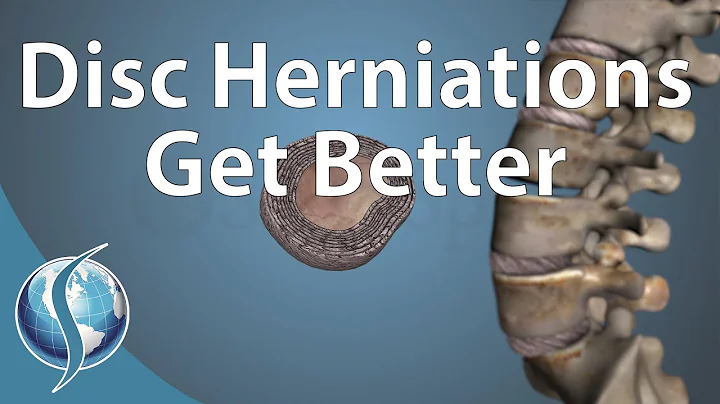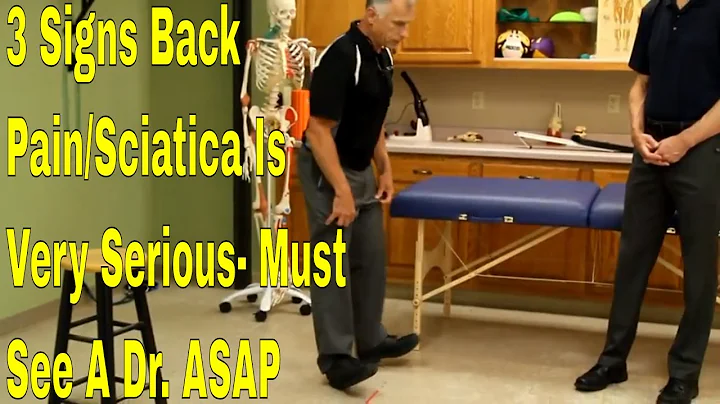During the consultation process, friends of patients often describe: "I have pain and numbness in my buttocks, and there is also radiating pain on the posterior and lateral sides of my thighs and calves. This pain is characterized by burning or knife-like characteristics" .

Many patients always ask me, doctor, I lumbar disc herniation , sciatica . I have seen many doctors and used different methods of treatment, but there is still no improvement. How to treat it?
If you are also a patient who cannot be treated for a long time, please think about it. Is it because you have not understood your own problem and are blindly treating it?
Below, I will educate you about this type of sciatica. In addition to lumbar disc herniation, what other common factors can cause it? How to deal with it?
Sacroiliac joint disorder

At present, most people's pelvis is skewed and asymmetrical, but people don't pay much attention to it and it's easy to ignore it. In the pelvis, the two ends connected to the spine happen to be the sacroiliac joints. Once the pelvis is tilted, it will cause sacroiliac joint dislocation and disorder.

And the sciatic nerve that comes from the lumbar spine must first pass through the pelvis. often causes dislocation and disorder of the sacroiliac joints due to your lifestyle habits and poor posture, which can compress the sciatic nerve running through it and cause hip pain. or radiating numbness of the lower limbs.
.How to tell if your pelvis is skewed?
① If you have legs crossed or sit or stand for a long time, be sure to ask your family to help you see if you have high or low shoulders ? Or are the pants you are wearing asymmetrical? Pelvic tilt is likely present.

② Lie down and test by yourself: Bend your legs, put your feet together, and put your heels and buttocks close to each other. See if the knee joints on both sides are the same height? If one side is high and the other is low, and the two sides are not at the same height, the pelvis is likely to be skewed.

③ Standing bending test: Stand straight, let your family find your waist , press your thumbs on it, and then bend forward to see the changes in the thumb on the waist. If one thumb moves up, it can be determined Your pelvis is tilted.

. How to deal with it?
As long as there is pelvic tilt, it must be treated. It is currently the most important and common cause of low back and leg pain. Because it is ignored, low back and leg pain is often misdiagnosed as caused by lumbar disc herniation. If you want to confirm whether the pelvis is tilted, you can go to the hospital to take an anteroposterior X-ray of the pelvis, and then ask a professional doctor to read the X-ray, instead of just looking at the report from the imaging department. Generally, the report rarely mentions the pelvic sacroiliac Joint problems.

This shows that the judgment of sacroiliac joint disorders is a relatively professional technology, and even non-professional doctors are blank.
For example, the sacroiliac joint is composed of ilium , sacrum , pubic bone . Once a dislocation disorder occurs, everyone's situation will be different. It may be that one of the three bones is simply dislocated, or it may be Two pieces are misaligned, or more seriously, all three pieces are misaligned.

In iliac dislocation, there are often 6 different dislocation patterns. In sacral dislocation, 6 different dislocation patterns are commonly used. In pubic bone dislocation, there are often 8 dislocation patterns. Just imagine, which misalignment disorder is yours? Where to plant? I've been thinking that without a professional doctor, I really can't judge.
Therefore, in terms of treatment, you must first find a doctor to determine the tilt of your pelvis, and then provide targeted manual treatment. This is the only way to treat it. Because it is impossible to explain in detail all the methods and treatments for dislocation disorders in words, if you have any questions, it is best to seek help from a professional.
Piriformis syndrome
Some people may have heard of the disease name, and it is also a factor that is more likely to cause sciatic nerve entrapment. Let's take a look in detail.
Piriformis syndrome is often caused by the strain of the piriformis muscle on the pelvis and the mutation when the sciatic nerve passes through the piriformis muscle , causing the seat to be compressed by , resulting in a corresponding series of symptoms. symptom. As shown in the picture below

the piriformis muscle grows on your buttocks , one end of which is in the pelvis the anterolateral surface of the sacrum , about 2-4 the plane of the sacral vertebra , the muscle bundle exits the pelvic cavity through the ischial large foramen, approximately at the level of Hip, ends at the uppermost edge of the greater trochanter of the femur .

When the piriformis muscle passes through the greater sciatic foramen, it divides the greater sciatic foramen into the superior piriformis foramen and the inferior piriformis muscle foramen. The inferior foramen is composed of the lower edge of the piriformis muscle, the sacrospinous ligament, and the ischial spine, and runs through the largest, most important, and most famous sciatic nerve and inferior gluteal artery and vein in the body; the superior foramen is the upper edge of the piriformis muscle and the ischium. It is composed of a large notch, and some gluteal nerves and blood vessels also run through it.

. The relationship between the piriformis muscle and the sciatic nerve :
As shown in the picture below, the blue circle in the picture is the sciatic nerve, and the green circle is the piriformis muscle. The piriformis muscle is like a toll booth on a highway, and the sciatic nerve is like a highway. With such a relationship and position, if there is any problem, it will easily get stuck.

. How to judge whether your symptoms are related to the piriformis muscle?
① Ask your family to help you press the piriformis muscle in your buttocks. If there is obvious tenderness, it may even cause radiating pain in the lower limbs, which is highly suspicious.
② Cross-leg test: When sitting, place the affected lower limb on the unaffected knee, and pull the affected knee toward your belly. If there is hip pain or radiating pain in the lower limb, quickly flatten the affected lower limb in the opposite direction. The pain subsides immediately; this indicates piriformis muscle tension.

③ Lie in a prone position and ask your family to do the test as shown below. Bend the knee of the lower limb on the affected side 90°, keep the hip in a neutral position, and push the calf down toward the side where the family member is standing. If there is pain in the buttocks or radiation to the lower limbs, you can basically determine the piriformis muscle. nervous.

At this time, you may suspect that the piriformis muscle is compressing the sciatic nerve. It is best to go to the hospital for further clarification, and ultrasound and electromyography testing can be performed.
 . How to deal with it?
. How to deal with it?
① Manual therapy
recommends muscle energy technology to treat piriformis syndrome, as shown in the picture below: Lie on your stomach, bend your leg 90° on the painful side, and ask others to press down on the left side until the patient is in pain, and keep it in that position. Move and press the buttocks with the other hand. At this time, the patient uses a small force to the right to fight against the other person. The force of the two should be consistent. Fight for 10 seconds and rest for 5 seconds. Repeat the previous action again and fight for 20 seconds. Seconds, rest for 5 seconds; the last time is also 20 seconds of resistance, rest for 5 seconds; 3 cycles are enough.

- Self-stretching
Sitting position, bend the knee of the affected lower limb and place it on the outside of the knee joint of the healthy lower limb. Coordinate with breathing. When exhaling, rotate the body to the affected side until there is pain in the buttocks. Hold for 10 seconds. When inhaling, Restore and repeat 10 cycles.

Summary
Sciatica is not always caused by lumbar disc herniation. I hope everyone will pay attention and not be misled by the pictures of the waist; in clinical practice, sciatica that is actually caused by lumbar protrusion is very rare.
Many problems come from your life, such as long-term sitting, standing for long periods of time, crossing your legs, etc., which can cause nerve compression in the pelvic area.
If your problem is really caused by intervertebral disc herniation, don’t worry. Get to know yourself correctly as soon as possible. It’s not too late. Friends with lumbar herniation can click on the link to take a closer look.

# Rumor Zero Zero Plan# #Health Science Popularization Competition# #filial piety publicity month# @headlines refute rumors @headlines health information bureau @headlines health





















